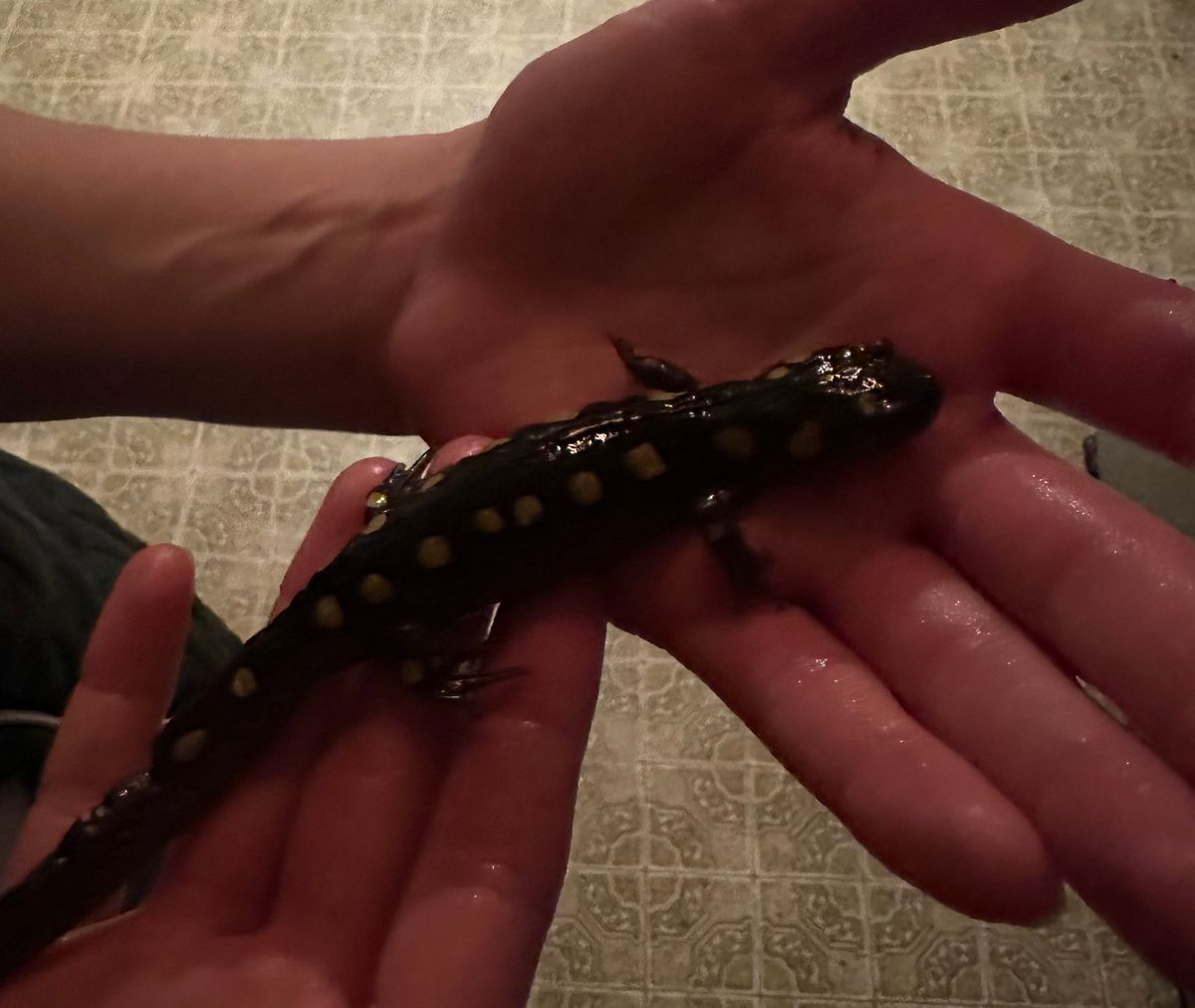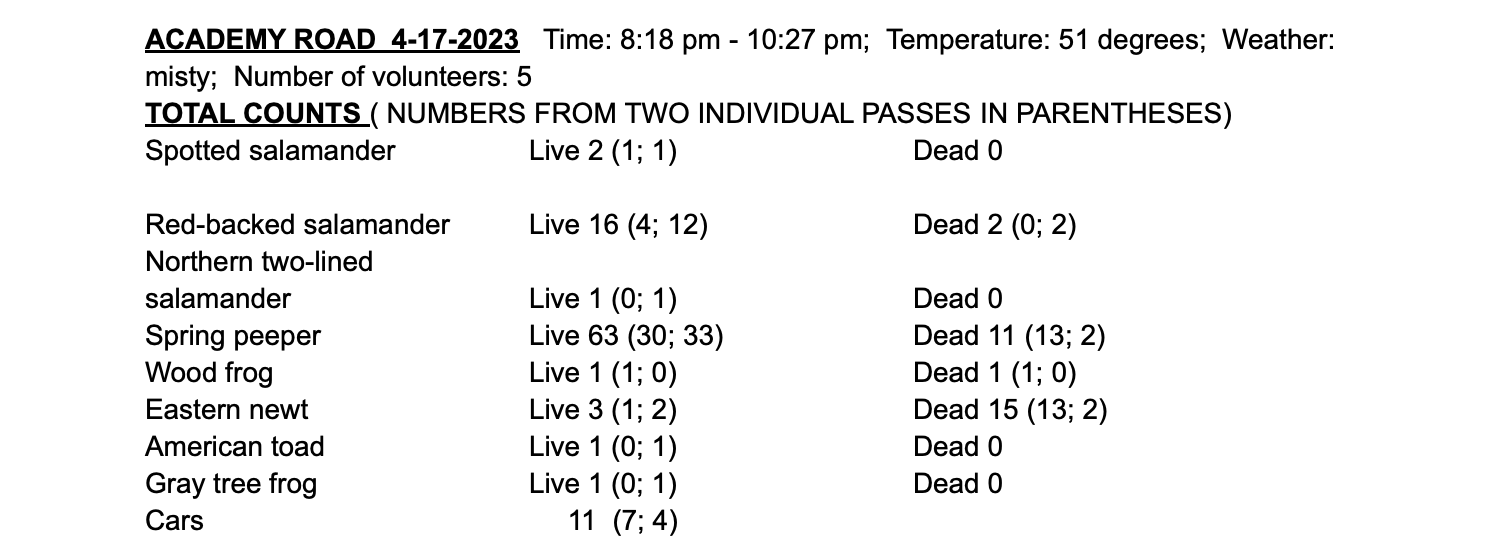Big Night - salamander casualties despite some human intervention
Wetland conservation and vernal pool mapping have helped protect amphibians’ sensitive breeding areas. Unfortunately, the migratory paths leading to these breeding habitats are little-studied and completely unprotected.

The big night — the early spring event when salamanders and other amphibians migrate en masse to their vernal pool breeding grounds — turned out to happen on April 17th. The conditions were favorable — wet roads, temperatures in the low to mid 50s, and a moisture-laden atmosphere (misty with some rain).
A total of nine volunteers divided themselves between two stretches of road (technically referred to as transects) on Academy Road and Tucker Hill Road. Each group walked the length of their transect twice, equipped with plenty of flashlights trained on the road surface to find amphibians crossing the road.
The volunteers based their approach on the survey method set out in the Amphibian Road Crossing Manual published by the North Branch Nature Center (NBNC) near Montpelier, as part of the amphibian conservation program. Specifically, it asks volunteers to: “… stick together as a group. It is important that teammates don’t get too far ahead or behind as … amphibians are counted that would not have been found by a group walking side-by-side. … only record amphibians observed crossing the actual roadway. … When you encounter a dead amphibian, remove it from the roadway with a spatula and tally it in the ‘dead’ row in your datasheet."
And on the return: “Begin a new survey for the return trip back to your car. Each survey is a one-way transect. … [as] we report amphibian crossing rates per survey, it is critical that data from multiple surveys are not combined.”
While amphibians found crossing were moved towards their pool, this method is devised for data collection. Data obtained using this standard method should be comparable (at least in theory) to data from the other transects on roads across Vermont, together forming a state-wide picture. The approach, however, is not one of going out with the express goal of minimizing amphibian deaths from road traffic.
So what was reported from the two Thetford transects?


Other comments from volunteers on the Tucker Hill Rd transect include: “… a TON of peepers and a couple wood frogs. … many red-backed salamanders, particularly concentrated on a 50’ stretch close to the big pool. Which incidentally (particularly around 9:00-9:30) was absolutely deafening. Standing right next to it was painful to the ears!”
Unfortunately Tucker Hill Rd is the town’s busiest connector between Route 132 and Route 113. While cars are less frequent at night than during peak commuting times, their numbers take a toll on salamanders and other amphibians.
As the volunteer noted “… It’s kind of unbelievable that with only 15 or 20 cars we had so many dead salamanders. I can’t imagine any survive at all on busier state roads. And we had dead ones where we had just traversed moments earlier. The cars that we were watching and tallying were killing the salamanders as we stood 1000’ away. “
The goal of gathering the information is to increase public interest in conserving amphibians, reduce mortality at amphibian road crossings, and to provide transportation planners with data on locations where amphibians move and their mortality rates. The data submitted by the Thetford volunteers will be integrated into the Amphibian Road Crossing data base and shared with the Vermont Reptile & Amphibian Atlas, the Vermont Agency of Transportation, city and town planners, and conservation groups.
Wetland conservation and vernal pool mapping have helped protect amphibians’ sensitive breeding areas. Unfortunately, the migratory paths leading to these breeding habitats are little-studied and completely unprotected. With enough participation, this volunteer initiative has the potential to reveal other important crossing points in town. It is unlikely that traffic patterns will change, however citizens can be organized to patrol documented crossings on the big night and scoop amphibians out of harm’s way. This could save scores of individual salamanders and frogs.
